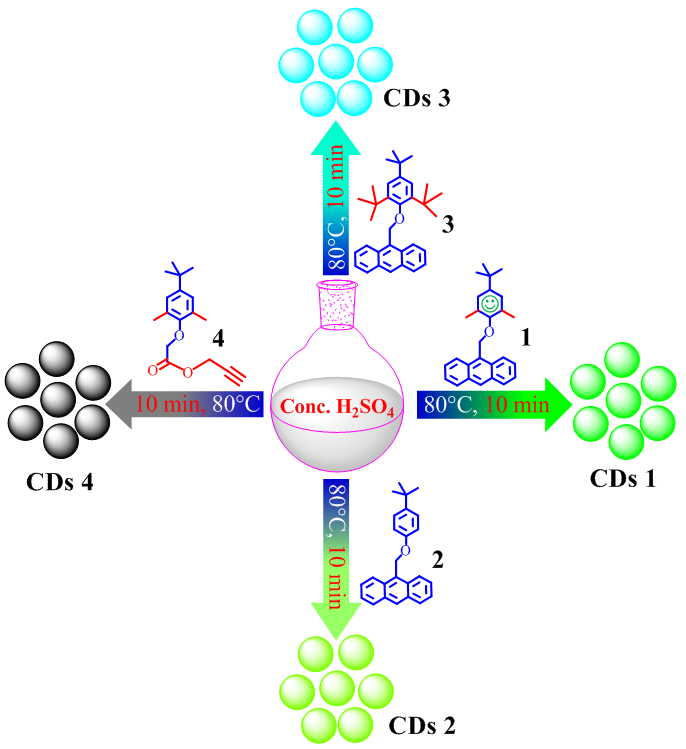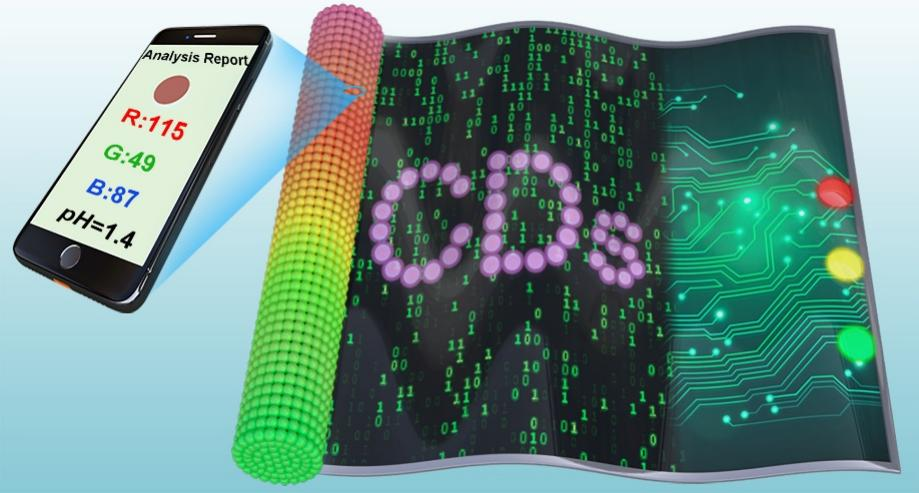Researchers Defined Novel Strategy for Manipulation of Luminescence Properties of Carbon Nanodots and Smart Visual Precision pH Sensing
Date:10-08-2021 | 【Print】 【close】
Carbon nanodots (CDs) are an emerging nanomaterial, which have been significantly developed due to their facile preparation from an abundant carbon source, low toxicity and excellent biocompatibility. Moreover, given their solubility in water and facile functionality and good photochemical stability, CDs are materials with promising potential applications.
Since the first discovery of carbon nanodots by Scrivens et al. in 2004, numerous methods for the preparation of CDs have been developed. Much effort has been devoted to further improving the optical properties of CDs, including surface passivation, functionalization, and doping with various heteroatoms. However, much less research has focused on the exploration of the relationship between the molecular structure and the final luminescence properties of the CDs.
A research group led by JIN Zongwen from Shenzhen Institute of Advanced Technology (SIAT) of the Chinese Academy of Sciences demonstrated that the fluorescence properties of CDs can be optimized by simple modification of the molecular structure of the carbon source, providing a novel strategy for the manipulation of CDs luminescence.
Their findings were published in Chemistry of Materials on July 23.
The researchers further found that the finally optimized CDs exhibited a rare extreme acid (pH 1 to 3) sensitivity. A distinguishable red/brown/green fluorescence color change could be achieved for a visual readout by simple tuning of the pH 1/2/3. The distinguishable color changes combined with the ratiometric fluorescence changes make this the best fluorescence detection method due to the self-calibration for environmental disturbances by two-well resolved wavelengths, and greatly improves the naked eye visual resolution to higher than 0.2 pH units.
“To the best of our knowledge, this is higher than the commercial precision pH test trips and maybe is the best resolution to-date by the naked eye.” said Dr. Jin Zongwen, the corresponding author of this study.
“Development of emerging technologies, such as smartphone-based sensing technology is likely to lead to the next generation of point-of-care testing (POCT) devices.” said Dr. Zhao Jiang-Lin, the first author of this study. Given the colorful changes with the high correlation coefficient for the calibration curve of CDs under extreme acidic conditions, the researchers successfully obtained precise color signals by the utilization of the smartphone-integrated CDs sensing platform and developed a portable, precise, rapid, visual pH measurement method.
Besides, researchers have designed a simple but efficient molecular “signal traffic light” logic circuit inspired by the reversible color changes of red/brown/green tri-fluorescence by tuning of the pH to 1/2/3. And given the unique pH dependent luminescence properties, the CDs have been further utilized in the anti-counterfeiting and information encryption field, making the “Burn after reading” encryption technology a reality.

Figure 1. The schematic of tuning CDs fluorescence properties by modified the molecular structure of carbon sources (Image by SIAT)

Figure 2. Schematic of the application of CDs in the fields of visualized precision pH detection, molecular “signal traffic light” logic circuit and information encryption (Image by SIAT)
Media Contact:
SUN Lujia
Email: lj.sun @siat.ac.cn
Download the attachment: